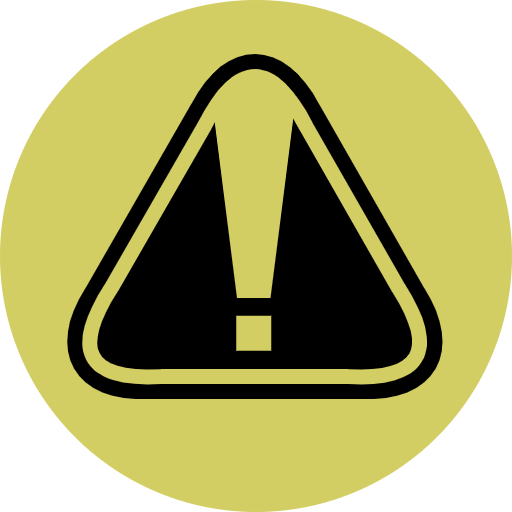

The Knife is a class of melee weapon. Simple self-defense and utility knives have blades up to 5 inches in length, and may be stored in a sheath or designed to be collapsible for safe storage.
A weapon with a hilt or a longer blade may be classified as a dagger. One with a serrated edge may be considered a combat knife.
| Material | Damage Die (one-handed) | Damage Die (two-handed) | Durability | Weight | Repair / Refinement Difficulty | Value |
|---|---|---|---|---|---|---|
| Rusty Iron Knife | d4-1 | 6 | 1 | 6 | 375 CR | |
| Stone Embalming Knife | d4 | 4 | 1 | 10 | 450 CR (Uncommon) | |
| Rusty Knife | d4-1 | 10 | 0 | 8 | 600 CR | |
| Tarnished Bronze Knife | d4-1 | 8 | 0 | 7 | 750 CR | |
| Bone Knife | d4 | 8 | 0 | 10 | 1,125 CR (Uncommon) | |
| Iron Knife | d4 | 10 | 1 | 10 | 1,275 CR | |
| Bronze Knife | d4 | 12 | 0 | 10 | 1,350 CR (Uncommon) | |
| Steel Pocket Knife | d4 | 14 | 0 | 15 | 1,500 CR | |
| Stainless Steel Pocket Knife | d4 | 16 | 0 | 17 | 2,250 CR | |
| Ceramic-Blade Knife | d4+2 | 4 | 0 | 22 | 6,000 CR (Uncommon) | |
| Obsidian Knife | d4+3 | 2 | 0 | 25 | 9,000 CR (Rare) | |
| Nocturnum Knife | d4+4 | 20 | 5 | 40 | 90,000 CR (Extremely Rare) |
*A successful hit always deals a minimum of 1 damage, even if negative modifiers would reduce the damage roll result to 0 or less.


You attack with a horizontal or vertical swinging motion across the target's body to inflict Slashing damage. Use a knife, dagger, combat knife, shortsword, longsword, or improvised slashing light weapon.
Make a Slash (One-Handed) check against the target's Passive Agility, or against the outcome of a Dodge or Block check if the target reacts.
| Success: | The target takes Slashing damage equal to your weapon's damage rating. |
| Critical Success: | Critical Hit. The target takes twice the usual amount of damage. |
| Failure: | You miss. |
| Critical Failure: | The GM decides the effects. You might injure yourself or an ally, drop your weapon, or hit a solid surface and damage it. |


You thrust your weapon forward into the target creating a small but deep wound, inflicting Piercing damage. Use a knife, dagger, combat knife, shortsword, longsword, spear, or improvised piercing light weapon.
Make a Stab (One-Handed) check against the target's Passive Agility, or against the outcome of a Dodge or Block check if the target reacts.
| Success: | The target takes Piercing damage equal to your weapon's damage rating. |
| Critical Success: | Critical Hit. The target takes twice the usual amount of damage. A critical hit on a Stab attack might cause the target to bleed. |
| Failure: | You miss. |
| Critical Failure: | The GM decides the effects. You might injure yourself or an ally, drop your weapon, or hit a solid surface and damage it. |


With a swift motion, you grab onto your target from behind and drive your blade into them, inflicting massive damage. Use a dagger, knife, or combat knife.
In order to perform this attack, the target must be within reach and facing away from you. You have disadvantage unless you are hidden from the target. Once you perform the attack, the target is immediately alerted to your presence regardless of the outcome.
Make a Backstab (One-Handed) check against the target's passive agility.
| Success: | A successful backstab is always a critical hit. The target takes Piercing damage equal to twice your weapon's damage rating and falls prone. |
| Critical Success: | If the target is less than two sizes larger than you, your inflict lethal damage (the target falls prone and starts dying. Otherwise, treat this as a regular success. |
| Failure: | You grab onto the target, but they stop you from stabbing them. |
| Critical Failure: | You drop your weapon, and the target gains an attack of opportunity against you. |



You throw a item with the primary goal of hitting a target 4x4 feet or smaller. Make an Accurate Throw (Marksmanship) check to throw a small item up to a distance of your Strength score times 3 feet. To throw farther than this, or if the object has weight, then add your Strength modifier.
The difficulty is set by the GM based on the target's size, distance, the item's weight, and environmental circumstances.
| Success: | Your aim is true. Creatures near the area where the item lands may attempt to catch the item as a reaction, using the result of your Marksmanship check as the difficulty. |
| Critical Success: | Critical Hit. If the thrown item would deal damage, it deals double that damage. |
| Failure: | You miss, but you don't hit anything else. |
| Critical Failure: | You hit something unintended, such as a teammate near the target, or you drop the item. |